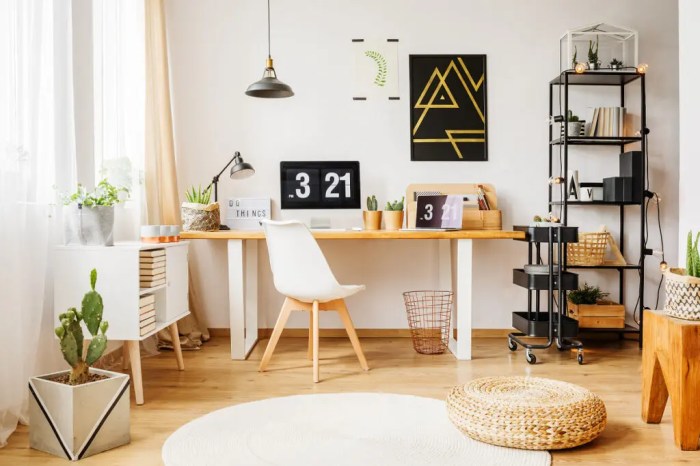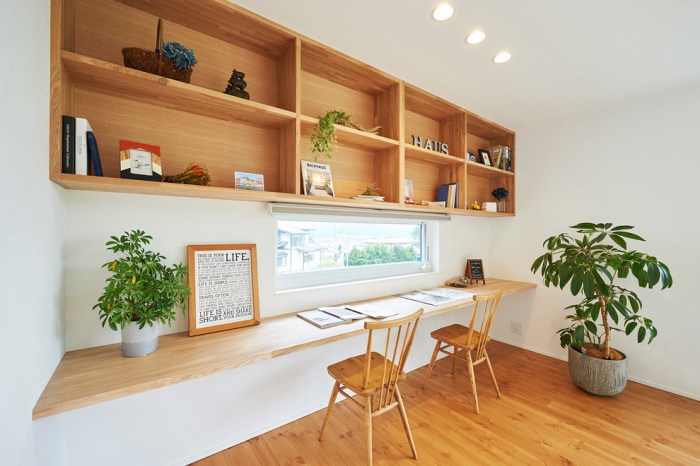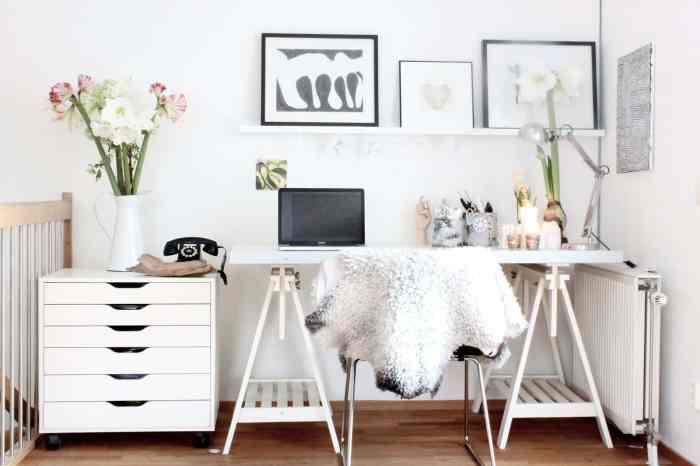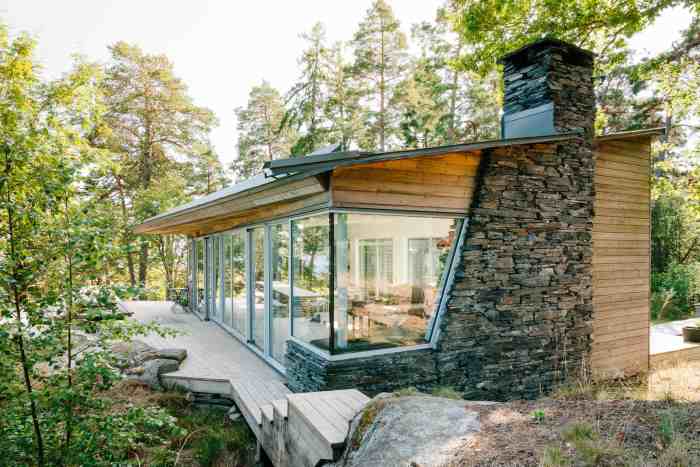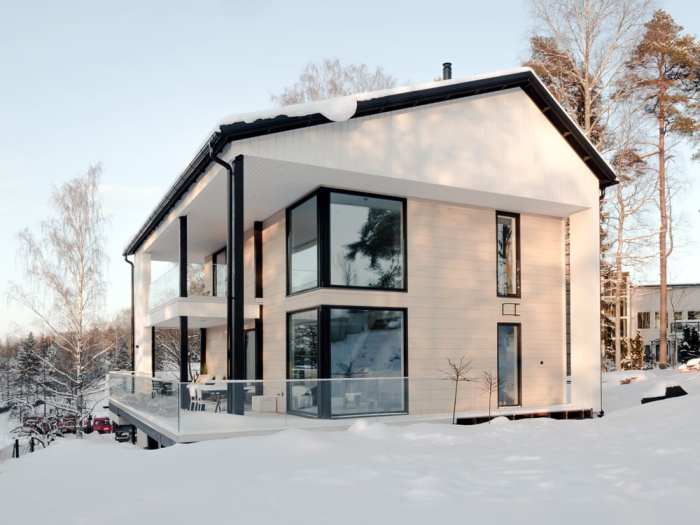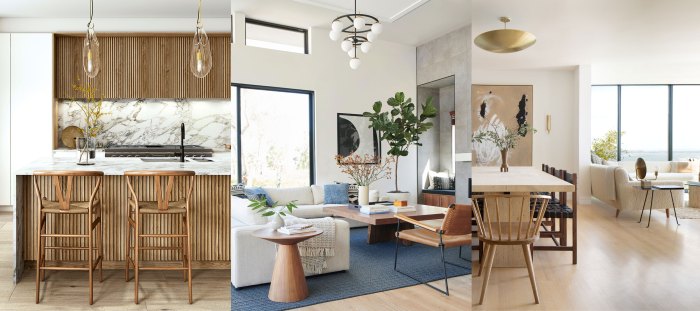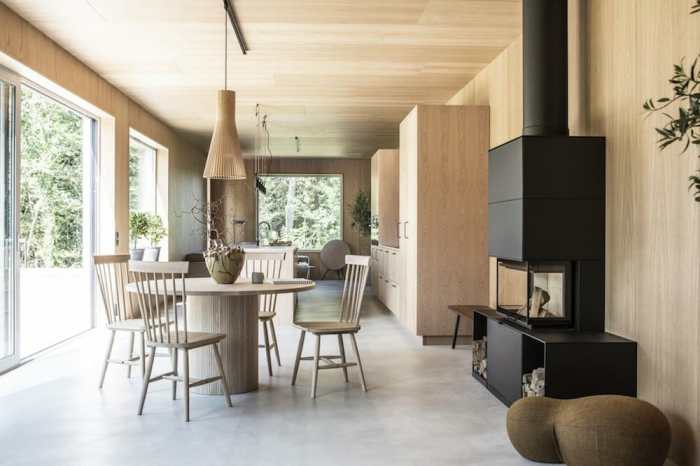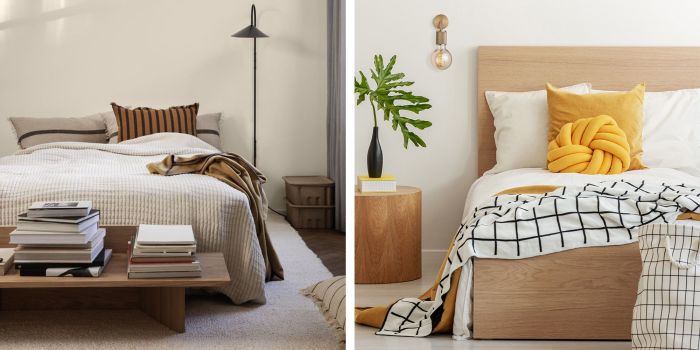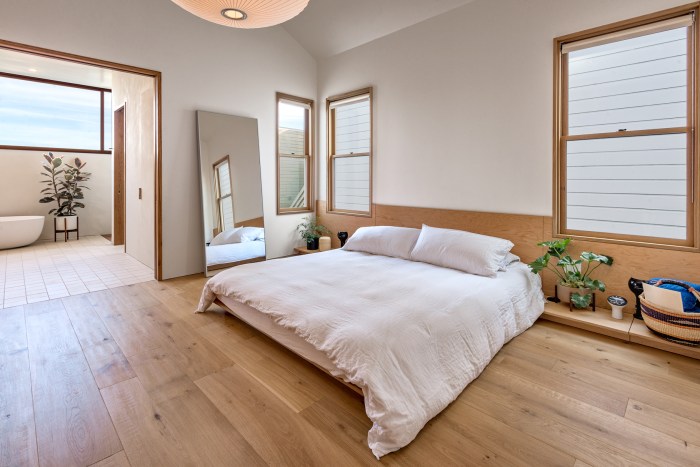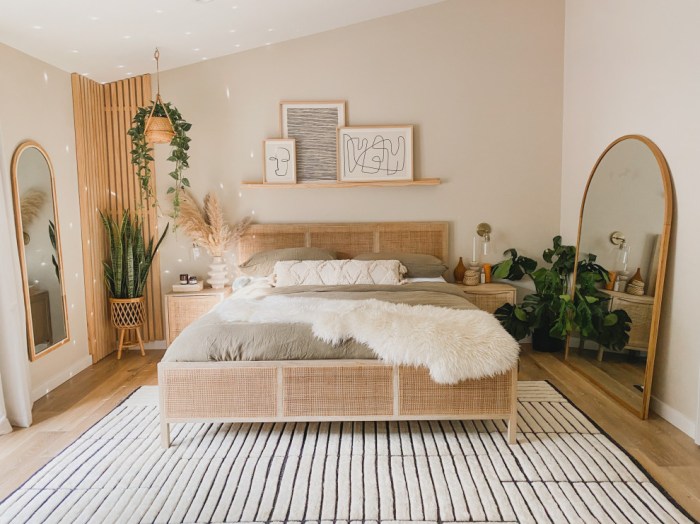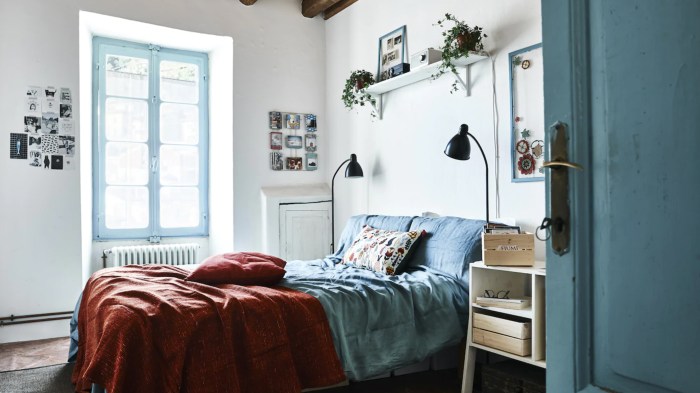The Minimalistic Scandinavian home style transcends mere aesthetics; it’s a philosophy of living, embracing simplicity, functionality, and a deep connection with nature. This design approach, characterized by its clean lines, light color palettes, and the strategic use of natural materials, creates spaces that are both visually appealing and incredibly calming. We’ll explore the core tenets of this popular style, delving into its defining characteristics, material choices, and the principles of space optimization that make it so effective.
From understanding the nuances of color palettes dominated by whites, grays, and muted blues, to selecting furniture that prioritizes functionality and minimalist aesthetics, we’ll unravel the secrets to creating a truly Scandinavian haven. We’ll also examine how strategic lighting and the thoughtful incorporation of natural elements like wood and stone contribute to the overall atmosphere of serenity and warmth. This guide will equip you with the knowledge to design your own space reflecting this elegant and efficient style.
Defining Minimalistic Scandinavian Home Style
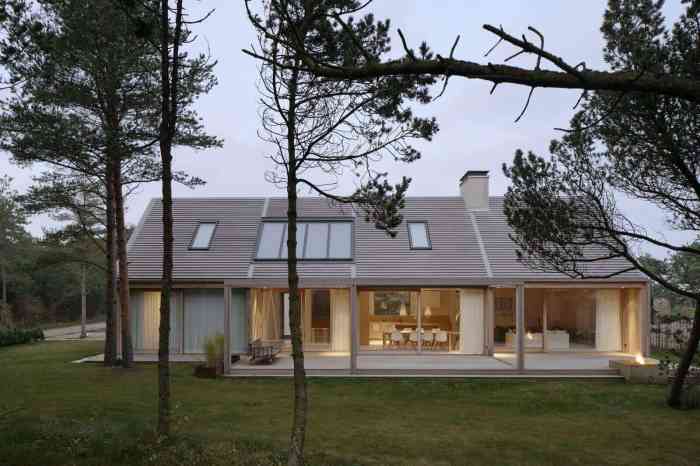
Minimalistic Scandinavian home style, a popular design aesthetic, represents a harmonious blend of functionality, simplicity, and natural elements. Its core principles stem from the region’s unique climate and cultural values, emphasizing practicality and a connection to nature. This style transcends mere decoration; it’s a philosophy of living that prioritizes clean lines, uncluttered spaces, and a sense of calm.Minimalistic Scandinavian design distinguishes itself from other styles through its emphasis on light, functionality, and the use of natural materials.
Unlike the more ornate details found in traditional styles, or the bolder colors of some contemporary designs, Scandinavian minimalism favors a restrained palette and a focus on clean, simple forms. The result is an environment that feels both inviting and serene, promoting a sense of well-being.
Core Principles of Minimalistic Scandinavian Design
The core principles of Minimalistic Scandinavian design revolve around functionality, simplicity, and natural light. Functionality dictates that every item serves a purpose, eliminating unnecessary clutter. Simplicity is expressed through clean lines, unfussy shapes, and a restrained color palette. Natural light is maximized through large windows and light-colored walls, creating a bright and airy atmosphere. These principles work in synergy to create spaces that are both aesthetically pleasing and conducive to relaxation and productivity.
The design philosophy emphasizes practicality and efficiency, reflecting a cultural value of resourcefulness.
Key Differentiating Characteristics
Several key characteristics differentiate Minimalistic Scandinavian design from other styles. Firstly, the emphasis on natural light is paramount. Large windows are a defining feature, allowing ample sunlight to flood the space. Secondly, the color palette is typically muted and neutral, often featuring shades of white, gray, beige, and black, accented with natural wood tones. Thirdly, the use of natural materials like wood, stone, and wool is prevalent, creating a connection to nature and a sense of warmth.
Finally, the overall aesthetic is one of simplicity and uncluttered space, prioritizing functionality and minimalism over ornamentation. This contrasts sharply with styles that incorporate more elaborate detailing or bolder color schemes.
Common Materials in Minimalistic Scandinavian Style
The materials used in Minimalistic Scandinavian design are carefully chosen to enhance the overall aesthetic and promote a sense of warmth and naturalness. Light-colored woods such as birch and pine are frequently used for flooring, furniture, and accents. Natural textiles like linen, wool, and cotton are preferred for upholstery and bedding, adding texture and comfort. Stone, particularly in lighter shades, can be incorporated into countertops or as decorative elements.
Metal accents, usually in matte finishes, are used sparingly to add subtle contrast. The selection of materials emphasizes sustainability and durability, reflecting a respect for both the environment and quality craftsmanship.
Comparative Analysis of Design Styles
The following table compares Minimalistic Scandinavian style with similar styles, highlighting their key differences:
| Style | Key Features | Color Palette | Materials |
|---|---|---|---|
| Minimalistic Scandinavian | Functionality, natural light, simplicity, natural materials | Muted neutrals (white, gray, beige), natural wood tones | Light wood (birch, pine), linen, wool, stone, metal |
| Japandi | Blends Japanese and Scandinavian aesthetics, emphasizes minimalism and functionality | Neutral tones with occasional pops of color, often incorporating black | Wood, natural fibers (bamboo, cotton), paper, ceramics |
| Modern Farmhouse | Combines modern elements with rustic farmhouse charm | Neutral base with pops of color (often blues and greens), whitewashed finishes | Reclaimed wood, metal, stone, textiles with rustic patterns |
Color Palettes and Material Selection
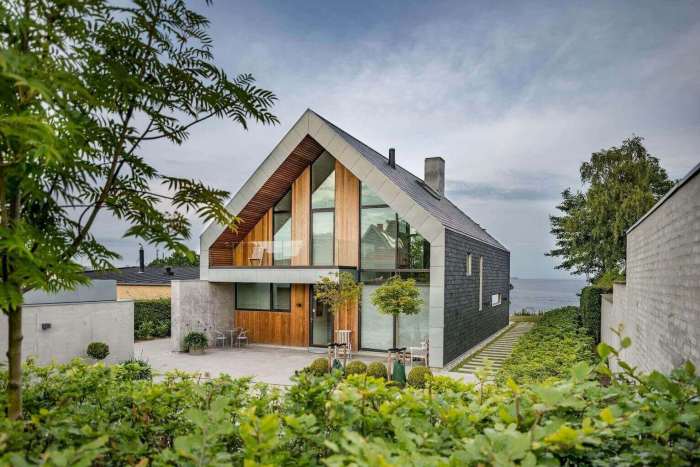
The Minimalist Scandinavian aesthetic hinges on a carefully curated selection of colors and materials that evoke a sense of calm, functionality, and connection to nature. This deliberate approach, rooted in the region’s long winters and appreciation for natural light, prioritizes a limited palette and the use of high-quality, durable materials that age gracefully. The resulting atmosphere is one of understated elegance and quiet sophistication.The core principle guiding color and material choices is simplicity.
Overwhelming the senses with a riot of colors or textures is antithetical to the philosophy. Instead, the focus is on creating a harmonious environment where each element complements the others, contributing to a unified and serene whole. This approach is not merely aesthetic; it’s also informed by psychological principles related to the impact of color and texture on mood and well-being.
Typical Color Palettes in Minimalist Scandinavian Homes
The most common color palettes in Minimalist Scandinavian interiors are characterized by their neutrality and subdued tones. Whites, off-whites (such as creamy eggshell or warm greige), and light grays form the foundation, maximizing the reflection of natural light and creating a sense of spaciousness. These neutral bases are then accented with subtle pops of color, often drawn from nature.
Think muted blues reminiscent of a Scandinavian sky, soft greens echoing lush forests, or earthy browns and tans inspired by the landscape. The use of these colors is generally restrained, used as highlights rather than dominant features. The overall effect is calming and inviting, promoting relaxation and focus.
The Use of Natural Materials
Natural materials are fundamental to the Minimalist Scandinavian style. The emphasis is on sustainability and the inherent beauty of unprocessed materials. Wood, in particular, plays a crucial role, often appearing as light-colored oak or birch flooring, paneling, or furniture. The grain and texture of the wood are frequently left visible, adding warmth and visual interest without being overly decorative.
Stone, typically in lighter shades, might be incorporated in fireplaces or as accents in bathrooms, adding a touch of earthy texture and durability. Textiles, such as linen, wool, and cotton, contribute softness and tactile appeal. These materials are chosen for their quality and longevity, reflecting a commitment to lasting design and responsible consumption. Their natural variations in color and texture add subtle depth and visual richness.
Sample Color Palette for a Minimalist Scandinavian Living Room
A living room designed in this style might feature walls painted in a soft, warm white (“Cloud White” by Farrow & Ball, for example). The flooring could be light oak, its natural grain subtly visible. A large, light gray sofa provides a neutral base, while accent pillows in muted teal and natural linen introduce subtle pops of color and texture.
A sheepskin rug adds warmth and visual interest. Finally, a coffee table made of light-colored wood with clean lines completes the look. This combination creates a calm, inviting space that is both stylish and functional.
The Contribution of Different Textures
The interplay of textures is a key element in achieving the desired aesthetic. The smooth surface of a painted wall contrasts with the coarse texture of a hand-woven rug or the grainy surface of the wooden floor. The soft touch of a linen throw pillow contrasts with the cool smoothness of a stone fireplace. This layering of textures adds visual depth and complexity without sacrificing the overall sense of simplicity.
The combination of smooth and rough, hard and soft, creates a balanced and engaging sensory experience. The tactile qualities of the materials are as important as their visual appeal, contributing to the overall sense of comfort and well-being.
Furniture and Decor
Minimalist Scandinavian design prioritizes functionality and simplicity, extending this philosophy to its furniture and decorative elements. The aesthetic emphasizes clean lines, natural materials, and a sense of spaciousness, achieved through careful selection and placement of pieces. This approach isn’t merely about aesthetics; it’s rooted in a practical understanding of how space impacts well-being, aligning with principles of ergonomic design and the psychological benefits of uncluttered environments.The core principle guiding furniture selection in this style is functionality coupled with understated elegance.
Each piece must serve a clear purpose, and its design should be free from unnecessary ornamentation. This emphasis on practicality stems from the Scandinavian cultural emphasis on functionality and efficiency, influenced by the region’s long winters and need for comfortable, yet uncluttered living spaces. The simplicity of the furniture also promotes a sense of calm and order, contributing to a relaxing atmosphere.
Furniture Selection in Minimalist Scandinavian Style
Common furniture pieces in this style include light-colored wooden chairs with simple designs, often featuring tapered legs and minimalist upholstery. Sofas are typically low-profile and unadorned, upholstered in neutral fabrics like linen or wool. Storage solutions are integrated seamlessly into the design, often utilizing built-in shelving or minimalist cabinets in light wood or white. Tables, both coffee and dining, are characterized by clean lines and simple shapes, often made from light wood or painted white.
Beds are typically platform beds with a low profile, emphasizing a sense of openness and airiness. This selection reflects the need for multi-functional furniture that serves a practical purpose without overwhelming the space.
Decorative Elements
Decorative elements in Minimalist Scandinavian homes are carefully chosen to complement the overall aesthetic without disrupting the sense of calm and order. Natural materials like wood, stone, and wool are favored, reflecting a connection to nature. Simple, geometric patterns can be incorporated through textiles like throws or cushions, but these are used sparingly. Plants are a key element, bringing life and vibrancy to the space without cluttering it.
The placement of these elements is also crucial; they are strategically positioned to enhance the room’s functionality and visual appeal, rather than filling every available space. For example, a single, carefully chosen piece of art can serve as a focal point, while a small vase of flowers adds a touch of natural beauty. This restrained approach to decoration reinforces the minimalist aesthetic, creating a sense of spaciousness and tranquility.
Essential Furniture for a Minimalist Scandinavian Bedroom
The selection of furniture for a Minimalist Scandinavian bedroom prioritizes functionality and a sense of calm. Over-furnishing is avoided, ensuring the space feels open and airy. The following five pieces are essential:
- A low-profile platform bed with a simple headboard, ideally made from light-colored wood or painted white.
- A simple nightstand, ideally made from the same material as the bed, with minimal drawers or shelves for essential items.
- A wardrobe with clean lines and integrated storage, providing ample space for clothing and other belongings without visually overwhelming the room.
- A comfortable armchair or small seating area, ideally upholstered in a neutral fabric like linen or wool, for reading or relaxing.
- A full-length mirror, which can be incorporated into the wardrobe or placed discreetly on a wall, maximizing functionality and reflecting light to create a sense of spaciousness.
Lighting and Ambiance
The successful implementation of a Minimalistic Scandinavian home style hinges significantly on the strategic use of lighting to create a warm, inviting, and functional space. The interplay of natural and artificial light sources is crucial in achieving the desired atmosphere, reflecting the core principles of this design aesthetic: simplicity, functionality, and connection with nature. Poor lighting can undermine the entire design, making a space feel cold, stark, and unwelcoming.The careful selection and placement of lighting fixtures are paramount in achieving the characteristically bright yet cozy ambiance of a Scandinavian home.
Different light sources serve distinct purposes, contributing to the overall layering of light essential for a visually appealing and comfortable environment. The human visual system is highly sensitive to light levels and color temperature, influencing mood, productivity, and even sleep patterns.
Types of Lighting Fixtures for Minimalistic Scandinavian Design
Minimalistic Scandinavian interiors benefit from a layered lighting approach, incorporating ambient, task, and accent lighting. Ambient lighting provides general illumination, while task lighting focuses on specific areas requiring detailed work, and accent lighting highlights architectural features or decorative elements. This layered approach avoids harsh shadows and creates a sense of depth and visual interest.
- Pendant Lights: Simple, geometric pendant lights, often made of materials like brushed brass, matte black metal, or white opal glass, are a staple. Their clean lines and minimalist design add a touch of elegance without overpowering the space. Consider a single, large pendant light above a kitchen island or dining table, or a cluster of smaller pendants in a hallway.
The light emitted should be soft and diffused, minimizing harsh shadows.
- Floor Lamps: Tall, slender floor lamps with adjustable arms provide flexible task lighting in living areas or reading nooks. Materials like light-colored wood, metal, or even natural fibers complement the overall aesthetic. The lampshade should be simple and understated, preferably in a light neutral color or natural material like linen or cotton.
- Recessed Lighting: Recessed lighting offers a clean, unobtrusive way to provide general ambient illumination. This type of lighting is particularly effective in kitchens and bathrooms, where it provides even, shadow-free light for tasks like cooking or grooming. Using dimmable recessed lights allows for adjustment of light levels to suit different moods and activities.
- Table Lamps: Small, minimalist table lamps can add a touch of warmth and personality to side tables or desks. Choose lamps with simple bases and shades in muted colors or natural materials, ensuring they complement the overall color palette of the room.
Lighting Plan for a Minimalistic Scandinavian Kitchen
In a Minimalistic Scandinavian kitchen, the lighting plan should prioritize functionality and aesthetics. The goal is to create a bright, inviting space that is well-suited for both preparing meals and socializing.
- Under-Cabinet Lighting: LED strip lights installed under the cabinets provide task lighting for countertops, eliminating shadows and making food preparation easier. The cool white light temperature of LEDs is efficient and enhances visibility.
- Pendant Lighting over Island: A single, large pendant light, preferably with a matte white or opal glass shade, should be hung above the kitchen island. This provides ambient lighting and creates a focal point in the room. The light should be bright enough to illuminate the island area for gathering and dining.
- Recessed Lighting: Recessed lights in the ceiling provide general ambient illumination, ensuring the kitchen is evenly lit. Dimmable recessed lights offer versatility for different times of day and moods.
Maximizing Natural Light in Minimalistic Scandinavian Design
Natural light is a cornerstone of Scandinavian design. Maximizing its use is crucial for creating a bright and airy atmosphere. Studies have shown that exposure to natural light improves mood, sleep quality, and overall well-being.
- Large Windows: Large windows are essential for allowing ample natural light to flood the space. Floor-to-ceiling windows are ideal, but even maximizing the size of existing windows can significantly improve light penetration. The use of sheer curtains or blinds allows for light control while maintaining privacy.
- Light-Colored Walls and Floors: Light-colored walls and floors reflect natural light, making the space feel brighter and more spacious. White, light gray, and pastel shades are commonly used in Scandinavian interiors to maximize light reflection. This is based on the principle of light scattering and reflection, where lighter surfaces scatter more light than darker surfaces.
- Mirrors: Strategically placed mirrors can help to bounce natural light deeper into the room, illuminating areas that might otherwise be shadowed. Large mirrors can be used as decorative elements while simultaneously improving the distribution of natural light.
Space Optimization and Functionality
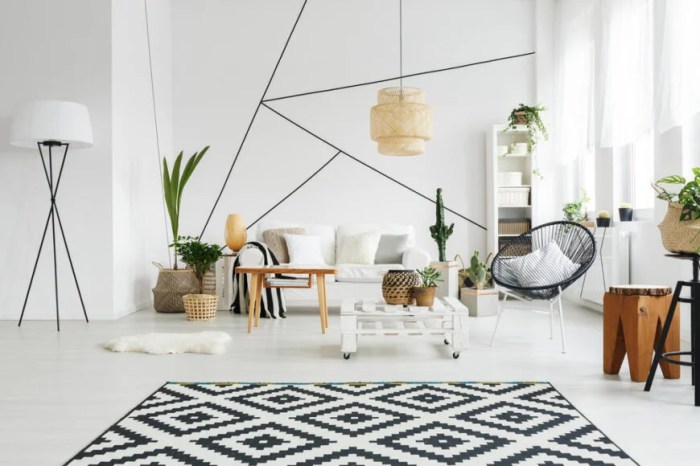
The principles of Minimalistic Scandinavian design, emphasizing functionality and clean lines, are particularly well-suited to maximizing space in smaller apartments. By carefully curating possessions and strategically utilizing storage solutions, even compact living spaces can feel open, airy, and surprisingly spacious. This section explores practical strategies for optimizing space and enhancing functionality within a Minimalistic Scandinavian home.
Effective space optimization in a small apartment hinges on a mindful approach to storage and the strategic placement of furniture. The inherent functionality of Scandinavian design, prioritizing multi-purpose pieces and built-in solutions, directly addresses the challenges of limited square footage. This approach leverages vertical space, utilizes hidden storage, and incorporates furniture that serves multiple purposes, maximizing the utility of every square inch.
Maximizing Space in a Small Apartment Using Minimalistic Scandinavian Principles
Employing the principles of Minimalism and Scandinavian design allows for the illusion of a larger space, even in a small apartment. This is achieved through a combination of light color palettes, strategic furniture placement, and clever storage solutions. For instance, using light-colored walls and floors visually expands the room, while strategically placing mirrors can further enhance this effect by reflecting light and creating the perception of depth.
Multifunctional furniture, such as a sofa bed or a coffee table with built-in storage, also contributes to space optimization. Minimizing clutter is crucial; keeping surfaces clear and organized enhances the sense of spaciousness.
Effective Organization of a Minimalistic Scandinavian Closet
A well-organized closet is essential for maintaining a clutter-free Minimalistic Scandinavian aesthetic. The key lies in thoughtful organization and the strategic use of vertical space. Shelving units, particularly those with adjustable shelves, provide flexibility to accommodate items of varying heights. Hanging organizers maximize vertical space and keep clothes neatly arranged. Folding techniques like the KonMari method can significantly increase storage capacity and maintain order.
Clear containers and labeled boxes help to maintain visual tidiness and easily locate specific items. Regular purging of unwanted items is vital to prevent accumulation and maintain the streamlined aesthetic.
Creating a Functional and Clutter-Free Living Space
Creating a functional and clutter-free living space involves a conscious effort to streamline possessions and optimize the use of available space. This is achieved through careful selection of furniture and décor, prioritizing pieces that are both aesthetically pleasing and functional. Decluttering is a continuous process; regularly assessing possessions and discarding or donating unwanted items is essential to prevent clutter buildup.
Strategic storage solutions, such as wall shelves, under-bed storage, and ottomans with storage compartments, help to keep items organized and out of sight. The principle of “one in, one out” helps maintain a balanced level of possessions, preventing accumulation.
Storage Solutions for a Minimalistic Scandinavian Bathroom
A Minimalistic Scandinavian bathroom prioritizes functionality and clean lines. Storage solutions should be both practical and aesthetically pleasing, seamlessly integrating into the overall design.
The following storage solutions are ideal for a Minimalistic Scandinavian bathroom:
- Built-in shelving units: These maximize vertical space and provide ample storage without cluttering the floor space. They can be customized to fit the specific dimensions of the bathroom and seamlessly integrate into the overall design.
- Floating shelves: These offer a sleek and modern look, providing additional storage while maintaining a sense of openness.
- Wall-mounted cabinets: These offer discreet storage for toiletries and other bathroom essentials, keeping countertops clear and uncluttered.
- Vanity with drawers and cabinets: A well-designed vanity with ample storage can consolidate bathroom essentials, keeping the space organized and clutter-free.
- Ladder shelves: These offer a visually interesting alternative to traditional shelving, adding a touch of character while providing practical storage.
Illustrative Examples
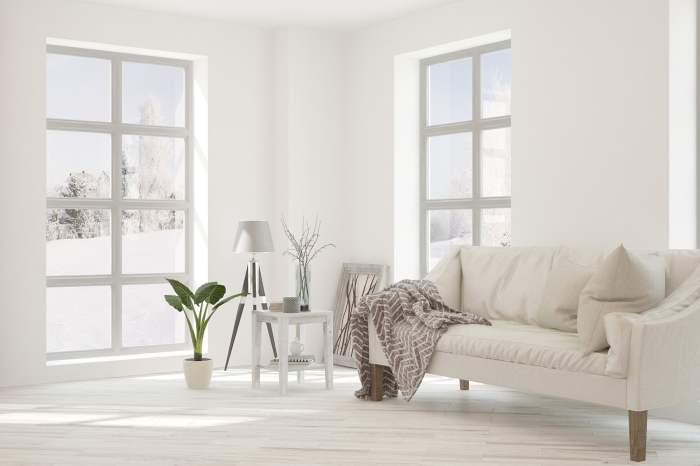
The following examples showcase the principles of Minimalistic Scandinavian design applied to various rooms within a home. These examples demonstrate how functionality, natural light, and a restrained color palette can create calm and inviting spaces. The emphasis remains on clean lines, high-quality materials, and a focus on essential items.
Minimalistic Scandinavian Living Room
Imagine a living room bathed in the soft glow of natural light streaming through large, unadorned windows. The walls are painted a muted, warm gray, a color chosen for its ability to reflect light and create a sense of spaciousness. The floor is covered in light oak planks, their natural grain adding subtle texture. The furniture is limited to essential pieces: a low-slung, modular sofa in a light gray fabric, a simple coffee table made of light wood with clean lines, and a sheepskin rug for added warmth and texture.
A single, minimalist pendant light hangs above the coffee table, providing focused illumination. The overall effect is one of understated elegance and serenity. The color palette adheres to the classic Scandinavian scheme of whites, grays, and natural wood tones, enhancing the feeling of spaciousness. The careful placement of furniture maximizes floor space, ensuring ease of movement and a sense of openness.
Minimalistic Scandinavian Kitchen
Functionality reigns supreme in this minimalist Scandinavian kitchen. The cabinets are sleek and handleless, crafted from light-colored wood or high-gloss white laminate. Work surfaces are made of durable, easy-to-clean materials such as light-colored quartz or marble. Appliances are integrated seamlessly into the cabinetry, maintaining a clean and uncluttered look. Open shelving displays a minimal collection of carefully chosen tableware and kitchen utensils, emphasizing both practicality and aesthetic appeal.
A large window provides ample natural light, making the space feel bright and airy. The color palette remains consistent with the rest of the home: light neutrals with accents of natural wood. The kitchen’s design prioritizes efficiency, with a well-planned layout that facilitates a smooth workflow. The absence of unnecessary clutter emphasizes the functionality of each element.
Minimalistic Scandinavian Bedroom
This bedroom is a sanctuary of calm and tranquility. The walls are painted a soft, creamy white, enhancing the feeling of spaciousness. The floor is covered in a natural fiber rug, adding warmth underfoot and a subtle textural element. The bed, a simple platform bed frame made of light wood, is dressed with crisp white linen sheets and a simple duvet cover.
A small nightstand made of light wood holds a simple table lamp. Natural light floods the room through large windows, creating a bright and airy atmosphere. The use of natural materials, such as linen and wood, creates a sense of warmth and comfort, while the restrained color palette maintains a sense of calm. The overall effect is one of understated elegance and quiet sophistication, promoting relaxation and restful sleep.
The texture of the linen sheets and the natural fiber rug provide tactile interest without overwhelming the space.
Minimalistic Scandinavian Home Office
Efficiency and organization are key features of this home office. A simple, light-colored wood desk sits against a wall, providing ample workspace. A comfortable yet unassuming chair is positioned to allow for hours of productive work. Storage is provided by a combination of sleek, minimalist drawers and shelves, keeping essential items within easy reach. The walls are a neutral color, minimizing distractions.
Natural light streams in from a large window, enhancing the workspace. The limited use of décor prevents visual clutter, allowing for focused work. The desk is organized with only essential items, reflecting a commitment to functionality and efficiency. The space encourages productivity and minimizes visual distractions, maximizing concentration.
Epilogue
Minimalistic Scandinavian design isn’t just a trend; it’s a mindful approach to creating a living space that promotes well-being. By prioritizing functionality, embracing natural light and materials, and cultivating a sense of calm through thoughtful curation, this style offers a blueprint for a home that is both beautiful and deeply restorative. The careful selection of furniture, the strategic use of color, and the maximization of space all contribute to an environment that feels both spacious and inviting, a testament to the power of less being more.
Ultimately, the Minimalistic Scandinavian home style represents a harmonious blend of form and function, offering a timeless aesthetic that resonates with a modern sensibility.
Popular Questions
What is the difference between Minimalist and Scandinavian design?
While often combined, Minimalism is a broader philosophy focused on removing clutter and maximizing functionality. Scandinavian design emphasizes natural light, natural materials, and a sense of coziness, often incorporating more textures than pure minimalism.
Can Minimalistic Scandinavian style work in a small space?
Absolutely! Its emphasis on functionality and decluttering makes it ideal for smaller spaces. Clever storage solutions and light color palettes help to maximize the feeling of spaciousness.
Are there any specific brands that specialize in Minimalistic Scandinavian furniture?
Many brands offer pieces that align with this style. Researching brands known for their commitment to sustainable materials and simple designs will yield good results. Look for brands emphasizing natural wood, clean lines, and functional design.
How can I incorporate plants into a Minimalistic Scandinavian home?
Plants are a great addition! Choose a few strategically placed, low-maintenance plants in simple pots to complement the clean lines and natural aesthetic. Avoid overcrowding.
Is Minimalistic Scandinavian style expensive?
While high-quality materials can be costly, the style’s emphasis on functionality and simplicity allows for budget-friendly options. Focusing on key pieces and using affordable, natural materials can achieve the look without breaking the bank.
